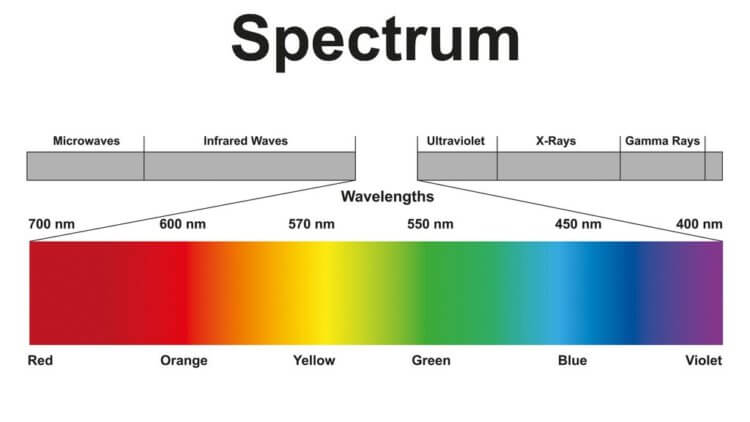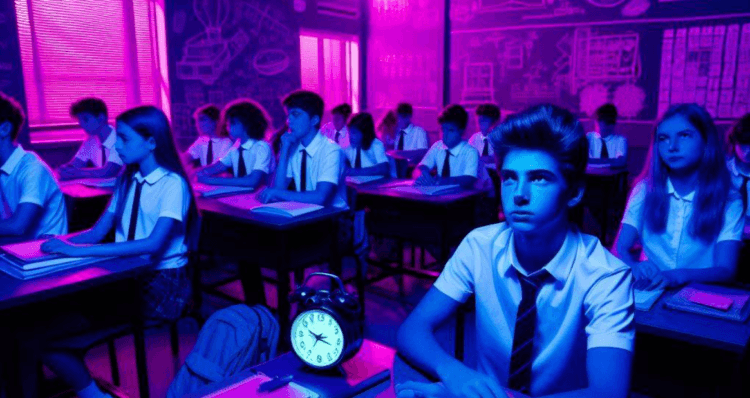Human vision has evolved so that we can see all the colors of the rainbow. However, there are shades that we cannot see, or rather, most people do not see. These include ultraviolet, which, due to its short wavelength, eludes vision. But, interestingly, it is seen by many animals, whose vision, it would seem, in terms of color recognition is more limited than ours. Moreover, studies have shown that this color is also seen by some people. As it turned out, the ability to see ultraviolet radiation depends primarily on a person’s age. It is quite possible that you also see this color, but do not even suspect it.

Most people can't see ultraviolet light, but not everyone
Why people can't see ultraviolet
The secret of ultraviolet lies in its wavelength, which is shorter than the visible spectrum. To understand why our vision does not see this wave, it is important to understand at least in general terms how vision works. Recall that at the back of the eye is the retina, which has photoreceptors, which we described in detail earlier.
Photoreceptors react to light and send signals through the optic nerve to the brain, which contain information about the wavelength they detect. The brain processes and interprets this information as color, as a result of which we see it.
Our photoreceptors respond to blue, and even capture some ultraviolet light. However, the lens in the eye, the transparent body that focuses light on the retina, filters it out. Therefore, the wave never reaches the retina, at least most of the ultraviolet radiation.

The spectrum visible to the human eye
This feature allows you to protect your eyes, since ultraviolet radiation is harmful. It causes the structures of the eye to age and also increases the risk of cancer and other health problems.
Who sees ultraviolet light and what does it look like
As scientists report, most young people can see ultraviolet light. For example, a 2018 study found that all college-aged participants saw ultraviolet light, a wavelength around 315 nanometers. Recall that the full range of this light is from 10 to 380 nm. They described this light as a desaturated violet-blue. But the ability to see it is lost by the age of 30.

Most students see part of the ultraviolet spectrum
There are also people who are able to see much more most of the ultraviolet spectrum. For example, until the 1980s, cataract surgery involved removing the cloudy lens without implanting a replacement. As a result, people began to see ultraviolet light. It is usually described as pale blue or pale violet.
Impressionist artist Claude Monet began to see ultraviolet light after cataract surgery in 1923. He reflected the difference in the perception of colors in his later paintings.
What animals see ultraviolet light
One 2014 study found that ultraviolet light is visible to many mammals, including cats, dogs, ferrets and reindeer. True, they also do not see it in its full spectrum, but unlike people, they do not lose this ability throughout their lives. In addition, this ability is developed in fish, birds, reptiles and amphibians, as well as invertebrates. They have special photoreceptors for this, as well as lenses that transmit ultraviolet light.

Dogs and many other animals see ultraviolet light
Obviously, this ability is not an accident, but why do animals need it? According to scientists, this increases the contrast of vision for detecting objects in the environment. For example, predatory sea creatures, thanks to ultraviolet light, can see the silhouettes of small prey such as plankton. Birds, thanks to ultraviolet light, can detect ripe berries. It must be said that in birds, ultraviolet radiation is often found in the plumage. Some insects, thanks to their ability to see ultraviolet light, can distinguish patterns on flowers.
Don't forget to subscribe to our Zen and Telegram channels so you don't miss the most interesting and incredible scientific discoveries!
Scientists believe that the ancestors of vertebrates saw ultraviolet light and had a special photoreceptor. But during human evolution, this photoreceptor has transformed more towards detecting violet waves than ultraviolet ones. Perhaps this happened because humans are a long-lived species, and therefore cannot afford to quickly damage their vision. Instead, we developed the ability to see other colors that animals cannot see, as we talked about earlier.